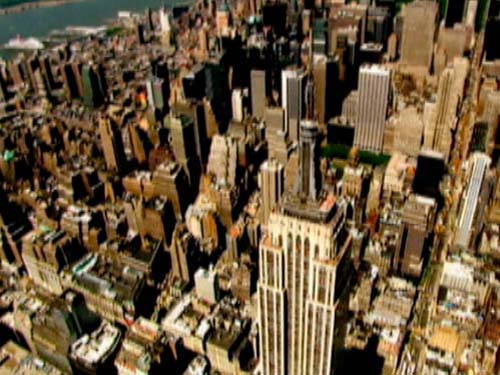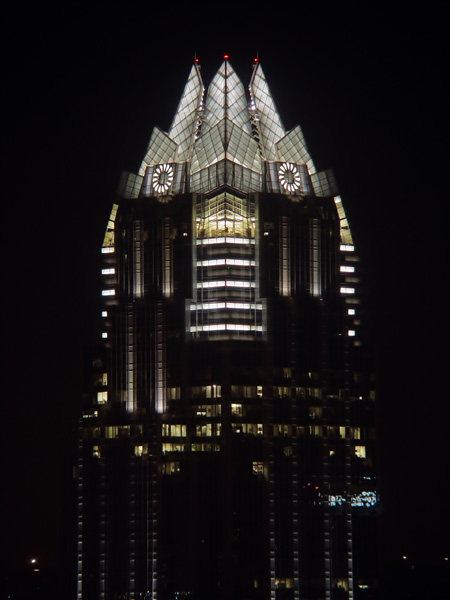May 28, 2008. It’s my sister Madeline's birthday, and she gets to pick where we eat dinner. No one is surprised to find out that we're going to The Grove in Westlake, again. The drive there is so familiar, that before I know it, we've arrived. The hostess greets us and leads us to our usual table. We've been here so many times, the entire family, besides my new stepmother, orders without glancing at the menu. We are surrounded by familiar families. We sit in our usual seats. We eat the usual. Not surprisingly, this is Madeline's favorite restaurant. Unlike Jordan, Madeline has always gravitated toward Westlake and our home.
 November 2008. I’m thirteen years old. I'm in another screaming match with my mother over another unimportant detail when my oldest sister, Jordan, decides that she has had enough. She explains to my mother and I that we are making absolutely no progress, grabs my arm, and drags me to her car. I reluctantly get in, knowing that resisting will not end well for me. Jordan refuses to tell me where she’s taking me. We pull up to a parking lot covered in wall murals and I’m immediately aware that I’m not in Westlake anymore. I hesitantly get out of the car and follow Jordan down the path to the entrance of Spiderhouse Cafe. I follow her through the door and to the bar where she orders two hibiscus iced teas from the tall guy with gaged ears behind the counter. I’m completely out of my element. We make our way to the outside deck and find two empty seats amongst the hipsters wearing their tight jeans and t-shirts from bands that “you’ve probably never heard of” and smoking their cancer sticks. I want to go home, but I know Jordan isn’t interested in my opinion. After sitting in silence for what feels like hours, she begins to explain why she likes coming here. She talks about how Spiderhouse allows her to get away instead of getting frustrated by things out of her control. I decide that Jordan obviously doesn't know what she is talking about. We finish our teas, get in the car, and before I know it, I am surrounded by the familiarity of Westlake again.
November 2008. I’m thirteen years old. I'm in another screaming match with my mother over another unimportant detail when my oldest sister, Jordan, decides that she has had enough. She explains to my mother and I that we are making absolutely no progress, grabs my arm, and drags me to her car. I reluctantly get in, knowing that resisting will not end well for me. Jordan refuses to tell me where she’s taking me. We pull up to a parking lot covered in wall murals and I’m immediately aware that I’m not in Westlake anymore. I hesitantly get out of the car and follow Jordan down the path to the entrance of Spiderhouse Cafe. I follow her through the door and to the bar where she orders two hibiscus iced teas from the tall guy with gaged ears behind the counter. I’m completely out of my element. We make our way to the outside deck and find two empty seats amongst the hipsters wearing their tight jeans and t-shirts from bands that “you’ve probably never heard of” and smoking their cancer sticks. I want to go home, but I know Jordan isn’t interested in my opinion. After sitting in silence for what feels like hours, she begins to explain why she likes coming here. She talks about how Spiderhouse allows her to get away instead of getting frustrated by things out of her control. I decide that Jordan obviously doesn't know what she is talking about. We finish our teas, get in the car, and before I know it, I am surrounded by the familiarity of Westlake again.
September 2012. I’m seventeen now. I walk onto the familiar deck at Flipnotics and find an empty table to work at. The men at the table next to me are having some kind of meeting in which they’re talking about new ways to ensure stable revenue for artists in Austin. The man at the table across from me works in silence on his laptop. I spread my work out on a picnic table. I ask the men if they would mind watching my things while I go inside to get a tea. They agree and one of them makes a joke about stealing my Environmental Science textbook. I walk past the newspaper stands and advertisements for local performances posted on the wall.
Pulp Fiction on Fridays at 8 PM in September and October $10
Peace Out Party The End of an Era November 4th 1-6 PM
Waffle Fest Improv Comedy Festival and All You Can Eat Waffle Buffet
Today, the barista is a blonde woman with a short pixie cut and thick cat eye liner. I order my usual tea and head back to my temporary work station. I open my computer and begin. I work silently until I hear my name called. I grab my tea from the window and continue working. One of the men from the meeting takes a smoking break while the others continue their discussion. I work on my English homework until I hear my name again. This time it’s my neighbor, Courtney. We chat for a while, but then get back to work. I am so focused, that I don’t notice time passing by. Before I know it, it’s time to go home. I pack up my things and brace myself for my return to reality.
The people at Flipnotics are not typical Westlakers, but they’re also not the alternative crowd like the one at SpiderHouse Cafe. When I’m here, I only see a few people I know. I realize that the Austin I am experiencing now is completely different from the one I grew up in and different from my sisters’ Austin. Jordan, Madeline, and I have each created our own ideas of Austin and while they may resemble each other in some ways, in reality, my idea of Austin is completely different from that of my sisters. I know that I still have a lot to learn, but I've come a long way from my thirteen year old pessimistic attitude. My view of life has developed and expanded, bearing little resemblance to that of my thirteen year old perspective.
































